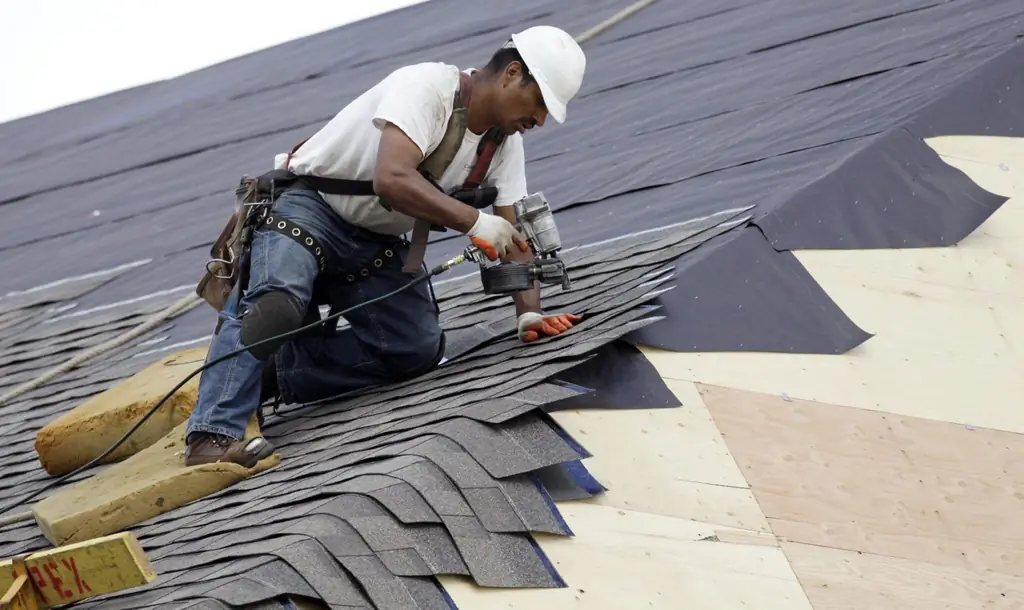
Table of contents:
- Author Bailey Albertson [email protected].
- Public 2023-12-17 12:53.
- Last modified 2025-06-01 07:32.
Repair of a soft roof: the choice of materials and the procedure for performing the main stages of work

Due to the low cost and ease of installation, the soft roof remains quite popular today. However, it has to be repaired more often than others. Let's figure out how the repair takes place and what materials are used in this case.
Content
- 1 When repairs are needed
- 2 Types of soft roof repair
-
3 Preparation for the repair of a soft roof
- 3.1 Budgeting
-
3.2 Selection and procurement of materials
- 3.2.1 Bitumen-polymer roll coatings
- 3.2.2 Roll materials of petroleum resin or rubber
- 3.2.3 Liquid materials (mastics)
- 3.3 Instrument preparation
-
4 Soft roof repair technology
- 4.1 Adhesion of detached panels
-
4.2 Installing the patch
4.2.1 Video: minor roof repair
-
4.3 "Old repair"
4.3.1 Video: roof repair "as before"
-
4.4 Overhaul
4.4.1 Video: Overhaul
- 4.5 Emergency repairs in winter
- 5 Video: soft roof repair technology
When repairs are needed
The most obvious and undeniable evidence that the time has come to repair the roof is the appearance of water on the walls and ceiling. But this is already an extreme case, which can be accompanied by a number of unpleasant events, including a short circuit in the power grid. It is clear that it is better not to bring the roof to such a state, and for this it must be inspected twice a year. If this is not possible, you can reduce the frequency of inspections to once a year, but not less often. The following signs should cause concern:
- Peeling of roofing material.
- Swelling, indicating that water has entered the coating. Note that this is not an unambiguous evidence of a violation of the integrity of the coating - it may have been laid on a wet base.
- Appearance of a network of cracks or single cracks.
- The formation of puddles on the roof surface, although there are no dents in the roof. The puddles indicate that the required slope was not maintained during the roofing. You need to act immediately, because sooner or later water will still find its way through the coating.
- The appearance of rot, fungus, mold, moss (formed in places of stagnant water) or vegetation (usually grows in cracks). It should be noted that in no case can the sprouts be ignored, since they lead to the rapid development of defects and can even partially destroy the concrete.
- Formation of defects such as pits, dents, in which water collects. This can be detected after contact of the coating with stretch marks, antennas, as a result of moving ice along it, etc.
- Finding places without protective stone powder (easily identified by color change) or it is present in large quantities in gutters (can be washed off by rain). A soft bituminous roof devoid of such a coating will soon crack under the influence of solar radiation.
-
Curling the coating around the edges. Sometimes you can observe the twisting of fragments of bituminous tiles, the reason for which is their overdrying (it is necessary to improve the ventilation of the attic).

Types of damage to a soft roof The presence of blisters, cuts, cracks in the roofing is a prerequisite for repairs
Particular attention should be paid to the places where the roof adjoins to skylights, skylights, chimneys and ventilation pipes passing through it.
If the roof has already leaked, you should not immediately take on the repair of the area directly above the leak: the roof must be carefully examined, since the defect can be located at a distance of up to several meters from the place where water appeared on the ceiling
Types of soft roof repair
Roofing “pie” restoration works are divided into the following types:
- Emergency repair. It is carried out unscheduled on an emergency basis, when the defects present can clearly lead or have already led to leaks. In the overwhelming majority of cases, it concerns only the top coat, the damaged fragment of which is replaced with a new one or, more often, covered with a patch. Typically, the area of the reconstructed site does not exceed 20% of the total roof area.
- Maintenance. Consists in the elimination of potentially dangerous defects identified during a routine inspection. Usually, the matter is also limited to the manipulation of the top coat, which is either patched or partially replaced. The area to be repaired rarely exceeds 40% of the roof area. Routine repairs are recommended to be carried out annually, since the elimination of defects at an early stage in the case of a soft roof can significantly save money.
- Major overhaul. It is performed when the proportion of problem areas on the roof surface exceeds 40%. The work covers the entire roofing "pie" as a whole, including the restoration of the vapor barrier. The top coat is mostly replaced with a new one.
Overhaul is a rather expensive undertaking, which may well exceed the cost of installing a new roof (the difference in price is due to dismantling and garbage disposal).
Preparation for the repair of a soft roof
During the repair of the roof, the building becomes vulnerable to precipitation, so it is extremely important to prepare so that the work is completed quickly and, as they say, without a hitch. At this stage, you should attend to a number of issues.
Budgeting
If you have a detailed estimate during the repair process, you will not have to spend time purchasing something extremely necessary that was overlooked. When compiling this document, you should think about everything very carefully, so that it provides for absolutely all types of work and materials, even the most insignificant. Along the way, the estimate will allow you to objectively assess the upcoming costs and compare them with real financial capabilities.
If a decision is made to entrust the repair of the roof to a third-party organization, then in order to draw up an estimate, it will need to provide the following information:
- a roof plan with dimensions, which indicates all pipes, shafts, parapets on the roof (thickness and height must be indicated), eaves overhangs (it is necessary to show the abutment zones);
- description or photographic images of defects;
- desired list of works;
- the name of the material that is decided to be used as a roof covering.
Selection and purchase of materials
Nowadays, you can buy any material and in any quantity without any problems. But the master should take into account that in the development of roofing, as in all other spheres of human life, there is a rapid development, and in order to spend money wisely, this issue should be more or less understood. Let's start with the fact that the roofing material familiar to everyone with a cardboard frame has long been recognized as obsolete. It was bypassed by analogs with a foil base - folgoizol and metalloizol.

Folgoizol is a multilayer material
But even these materials are far from ideal: bitumen in its pure form does not tolerate frosts and temperature changes, it is not “friendly” with ultraviolet radiation. The mastics used for gluing bitumen roll materials are also short-lived: the sun's rays quickly make them brittle. As a result, the only advantage of such coatings - low cost - is completely negated by the cost of major repairs, which have to be carried out every 5-7 years.
Those wishing to have a roof with a longer service life should pay attention to modern materials.
Bitumen-polymer roll coatings
Thanks to polymer additives, the volume fraction of which varies up to 12%, bitumen becomes more plastic and does not crack much longer: the service life is 15-20 years. Fiberglass, fiberglass or polyester film is used as a frame. This group of materials includes:
- rubistic;
- glass mat;
- bikrost;
- rubemast;
- linocrome;
- hydrostekloizol;
-
glass bit, etc.

The structure of the bitumen-polymer coating Bituminous polymer material has a wider operating temperature range and increased reliability
Materials with additives of thermoplastics, thermoplastic elastomers, crumb rubber and elastomers, which are considered to be very promising, should be distinguished into a separate subgroup. These include:
- dnepromast;
- filisole;
- thermoflex;
- dneproflex;
- loves;
- elabite;
- glass mat T;
- atacton;
- mastoplast;
- isoplast;
- bikroelast;
- bikroplast, etc.
Bitumen-polymer materials, due to their durability, reduce the cost of maintaining a soft roof by 2 times. At the same time, they inherited some disadvantages from bituminous materials:
- the coating must be laid in several layers (3-5);
- protective powder from stone chips is required;
- in hot weather, the coating softens greatly and with a roof slope of more than 25 degrees, it can slip.
Roll materials from petroleum resin or rubber
The most progressive option has the following advantages:
- laying is done in one layer (the second name is single-layer membranes);
- it does not soften in the heat, therefore it can fit on roofs with any slope;
- the roll width can be up to 15 m, so that the coating has very few seams;
- can be installed in winter;
- the material is elastic and very durable;
- resistant to frost and ultraviolet radiation, does not oxidize;
- has been serving for over 25 years.
The material can be glued with a special glue or bitumen (some brands are produced in a self-adhesive version), fixed with threaded fasteners, or simply sprinkled with a layer of rubble.

For the manufacture of the roofing membrane, ethylene-propylene rubber and polypropylene are used (approximately 30% of the total composition)
Due to single-layer installation and a significant service life of the membrane, the cost of installing and maintaining the roof is reduced by 4 times in comparison with bitumen.
Rubber and polymer membranes are successfully produced in Russia. As an example, we can cite the materials Kromel (JSC Kirovskiy Kombinat Artificial Leather) and Rukril (JSC Chemical Plant in Rezha near Yekaterinburg), as well as the products of JSC Nizhnekamskneftekhim.
Liquid materials (mastics)
In this case, we are not talking about adhesive mastics, but about bitumen-polymer and polymer compositions, with the help of which bulk roofs are made. In everyday life, they are often called "liquid rubber". The base material is mixed with the hardener and applied as such onto a flat surface. After a while, the liquid turns into a durable, elastic, rubber-like coating that does not have a single seam.
The ultimate elongation of the material is 1000%, so it retains its integrity even when the roof is deformed.

Liquid rubber is based on bitumen, and the material can be applied with a brush, which makes it convenient to use
Mastics are resistant to weather factors, including low temperatures and UV radiation, and their service life depends on the composition:
- bitumen-rubber - 15 years (for example, "Venta-U", "Hecopren", "Elamast");
- bitumen-latex - 20 years ("Blam-20", etc.);
- butyl rubber and chlorosulfopolyethylene - 25 years ("Polikrov-L", "Polikrov M-120", "Polikrov M-140", etc.)

Liquid roofing materials tolerate deformation, temperature changes and ultraviolet radiation well
An important advantage of self-leveling roofing coatings is their low weight - from 2 to 10 kg / m 2.
If the installation is carried out on a roof with a steep slope and at temperatures above +25 0 С, cement or another thickener must be added to the mastic.
Mastics are safe for health, as they do not emit harmful volatile substances. For application, the method of cold spraying is used, which excludes the possibility of fire.
Instrument preparation
The soft roof cannot be repaired with bare hands, so you need to arm yourself with the following tools:
- Ax. It is usually removed from the ax and attached to a piece of pipe of a convenient length. Used to dismantle the old coating. A mounting cutter can be used for the same purpose.
- Construction knife (for cutting roll materials).
- The heating tool for fusing the roll material is a gas torch or blowtorch (remember to include fuel in the estimate). The first to work is more convenient and faster.
- Building hair dryer. If bituminous shingles are used as a roofing, then heating can be done with a building hairdryer.
- Maklovitsy - special brushes for applying primer and mastic. In the absence of such, you can apply liquid formulations using an old broom. A roller is also used to distribute them.
-
Broom or broom (the roof must be cleaned of debris before repairing).

Soft roof repair tool The gas burner is the main tool, without which the roof repair process is impossible.
You must wear protective goggles when working with a gas burner
Soft roof repair technology
The method of roof restoration depends on which defects have been identified.
Bonding a peeled panel
The operation is carried out in stages:
- The detached fragment is lifted. The base or roll material underneath is cleaned of debris and thoroughly dried with a construction hairdryer.
- The base is coated with bitumen mastic and the exfoliated panel is glued.
- From above, the restored seam is also coated with mastic.
You can make bituminous mastic yourself. It is used in two forms:
- cold: for the repair of inner layers;
- hot: as a top coat.
To prepare cold mastic, you will need the following ingredients in a 1: 2: 2 ratio, respectively:
- dust-like filler (lime, gypsum, ash);
- bitumen;
- petrol.
First of all, it is necessary to heat up the bitumen to 180 º С and keep it so until all the water contained in it has evaporated. After that, the components are mixed, the mastic is cooled and used for its intended purpose.

A small amount of bituminous mastic can be prepared by yourself
Gasoline cannot be poured into heated bitumen, just the opposite - bitumen into gasoline
To prepare hot mastic, bitumen is heated in a boiler to 200 º C and boiled, gradually adding filler. Stirring can be done with a stick. It is important that the temperature of the bitumen during mixing does not fall below 160 º C, otherwise the quality of the material will be extremely low.
The mastic must be applied immediately after preparation, it cannot be stored.
Installing the patch
The patch is installed in the following order:
- The damaged area is cut with an ax. If the defect looks like a bubble, it must be cut crosswise and dried by bending the resulting "petals". After drying, they are returned to their place by gluing them with bitumen or nailing them.
- Further, all debris is removed from the coating area adjacent to the defect, after which it is cleaned of dirt and dust.
- The defect, together with the adjacent area, is filled with bituminous mastic or sealant.
- A piece of roll material is glued on top, which should cover the damaged area with a good margin.
- The patch is filled with bituminous mastic or sealant, which must be rolled out over it with a roller. Distribution is performed so that the fill has the greatest thickness at the edges of the patch.

The sequence of operations when installing a patch on euroruberoid
Roof patching is not the most reliable repair method, as it does not cover hidden defects. Experienced craftsmen try to use the method, albeit more expensive, but one hundred percent effective - "repair as before".
Video: minor roof repair
Old repair
The worn-out roof is completely covered with a new coating without dismantling the old one. Before that, it must be put in order - cleaned of debris and dirt, sweep away the dust.
Before such a repair, it is necessary to assess whether the structures can support the weight of the old and new coating. In any case, the number of layers on the roof should not exceed eight.
Video: roof repair "the old way"
Overhaul
In case of significant damage to the roof, even the "old repair" becomes impossible. In such a situation, you should resort to overhaul repairs. In the most neglected case, it will consist of the following stages:
- Removing old roofing.
- Knocking down the screed.
- Dismantling of insulation.
- Restoration or replacement of the vapor barrier.
- Repair of the internal drainage system.
- Insulation laying.
- Giving the surface the required slope using a sand bed.
- Installation of funnels for the internal drainage system.
- Laying cement-sand screed. To prevent the water from evaporating from the solution, it can be covered with bitumen after laying.
- Installation of roofing (the screed is treated with a primer before this).
The rolls are rolled parallel to the bottom edge of the roof, starting from the bottom. Each subsequent strip overlaps the previous one with an overlap of 10 cm. With significant slopes, the amount of overlap must be increased. The edges of the strips are treated with bitumen mastic.

The strips of roll material are overlapped
The next layer is laid with the dressing of the seams, that is, so that the new stripes cover the edges of the strips of the underlying layer.
The work is completed by applying a reflective or fire retardant coating. Traditional materials - roofing material, glassine or roofing felt - need to be covered with hot bitumen mastic on top, and then sprinkled with stone chips. It is pressed into the bitumen with a roller. New materials usually already have a protective powder.
It is clear that if certain elements or layers of the roof are in a satisfactory condition, the work associated with them can be omitted. In a good scenario, overhaul may be limited to replacing the roofing with a small local repair of the base and minor repairs of some elements.
If a third-party organization was involved in the repair of the roof, then another stage is added to the list - checking the quality of work. Here are some things a homeowner should look out for:
- The correct laying of the panels. They should lie flat, with a uniform over their entire length and not too much overlap.
- Tightness of adhesion of the edges of the coating to the base. A strong wind blows up the roof just by the edges, so it is extremely important that they are very carefully and securely glued or melted.
- Leaks in the rain. At first, the ceilings on the top floor should be carefully inspected for water leaks after each rainfall. Conscientious firms and roof repair teams usually give a guarantee for their work, so if a leak is found, the customer has every right to demand the correction of imperfections.
Video: overhaul
Emergency repair in winter
Most of the materials used for the device of a soft roof are not designed for installation at low temperatures. But an emergency situation may well occur in winter: a large amount of snow, a strong blizzard or ice movement can damage the roof. The following recommendations will help to carry out emergency repairs:
- First of all, the roof must be freed from snow, but so as not to damage it even more. It is best to use a rubber scraper for this purpose.
- For temporary patching of a hole, materials that do not brittle in the cold should be used. Of these, the most affordable are corrugated board and metal tiles. If a decision is made to make a patch of bituminous material, it must be kept in a heated room until the last moment. When frozen, it will crack when unrolled.
- There are different types of sealants designed for use at low temperatures and should be used.
- We must not forget that it gets dark early in winter, so you should take care of lighting the place of work.
- Equipment should provide for the possibility of a sharp deterioration in the weather, it is also advisable to get an assistant.

In winter, before starting repairs, it is necessary to clean the roof surface from snow
Video: soft roof repair technology
Due to its low strength, a soft roof has to be repaired quite often, but today the situation can be significantly improved by using the latest materials. The main thing is to follow the safety regulations governing work at height. The place where the dismantled materials will be dumped must be fenced and marked with warning signs.
Recommended:
Repair Of Metal Roofing, Including A Description Of Its Main Stages, As Well As Material And Tools For Work
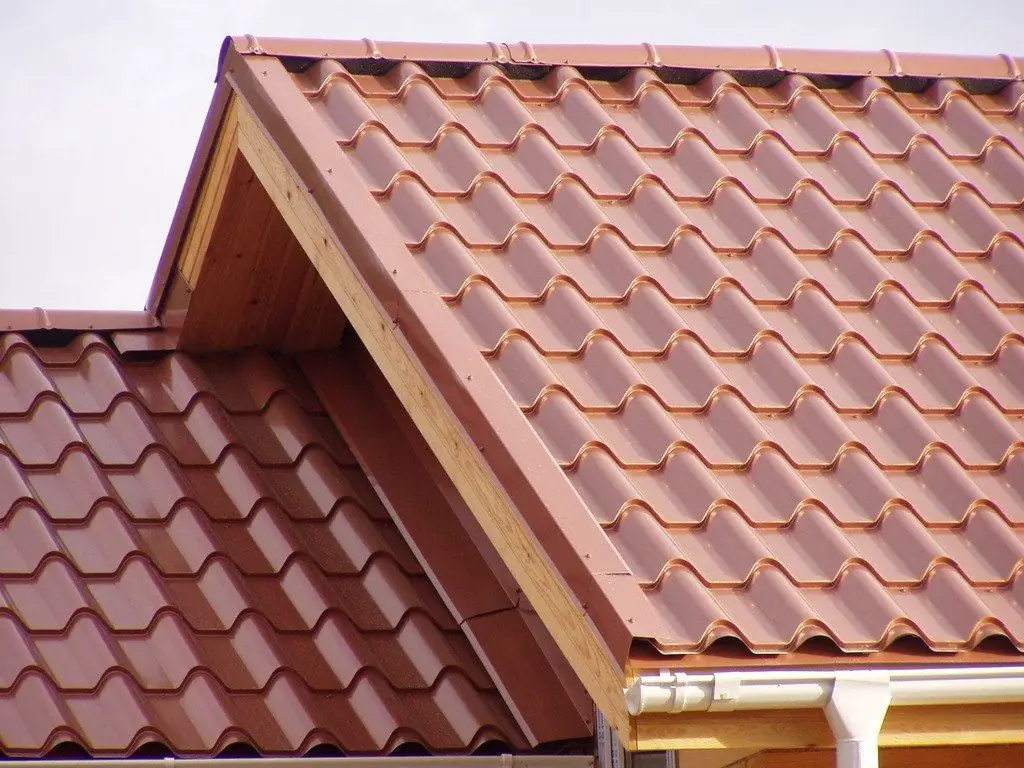
Methods and materials for the repair of metal roofing. What tool is needed and step-by-step instructions for eliminating roof breakages
Flat Roof Repair, Including A Description Of Its Main Stages, As Well As Material And Tools For Work
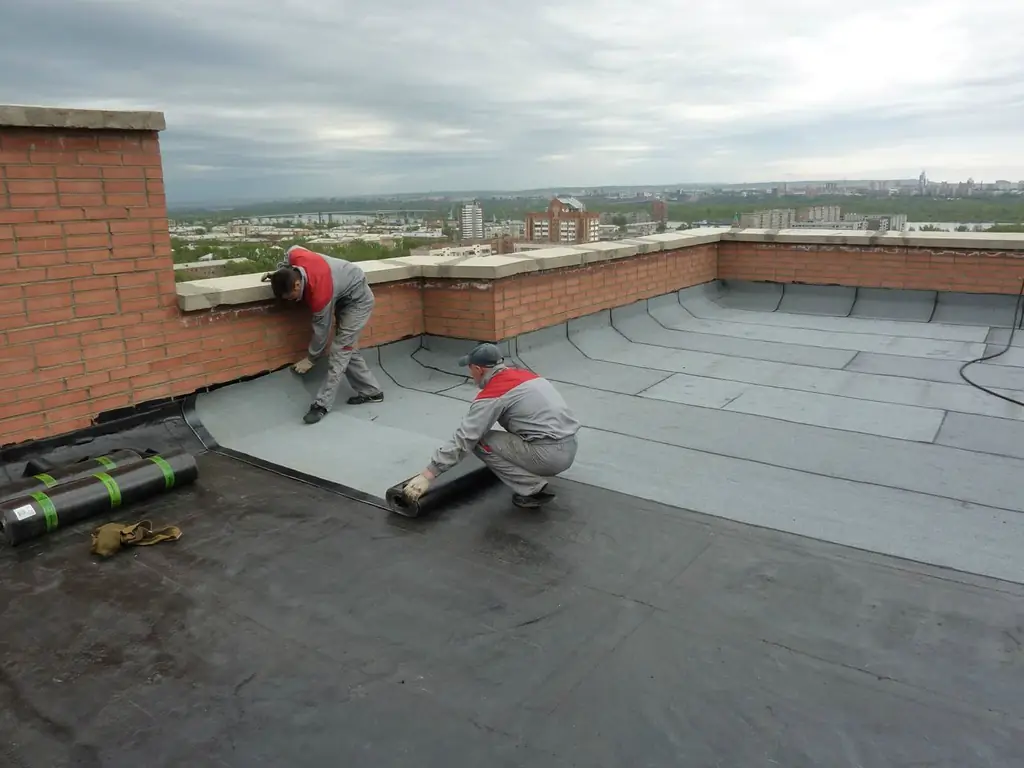
A brief description of the types of flat roof repair. Recommendations for the selection of roofing materials. Technology for eliminating various defects on flat roofs
Roof Repair, Including Its Various Types With A Description Of The Main Stages Of Work
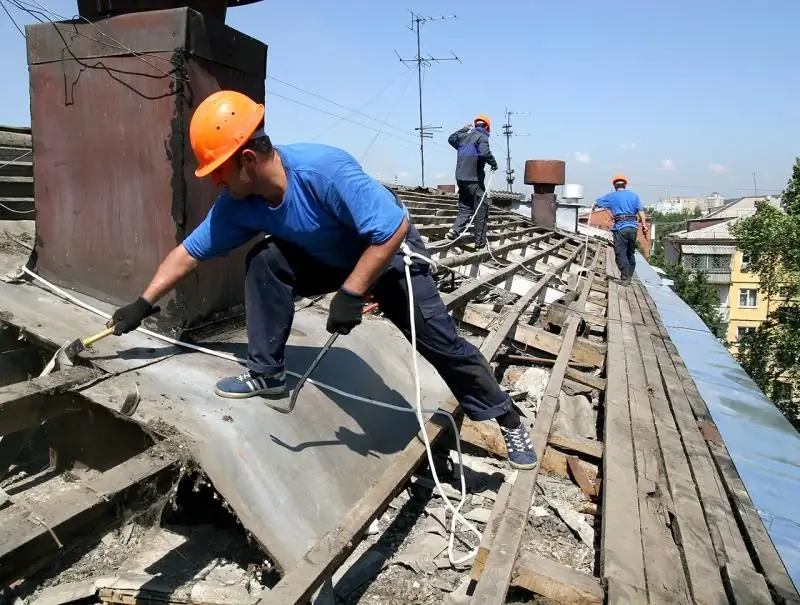
Features of various types of roofing pie repair. Required materials and tools. Step-by-step technology for repairing the main types of roofing
Rolled Roof Repair, Including A Description Of Its Main Stages, As Well As Material And Tools For Work

The main types of repair work. Preparation for work and general safety precautions. Step-by-step instructions for performing major and current repairs
Installation Of Soft Roofs, Including Preparation Of The Roof For Work, As Well As Equipment For Work
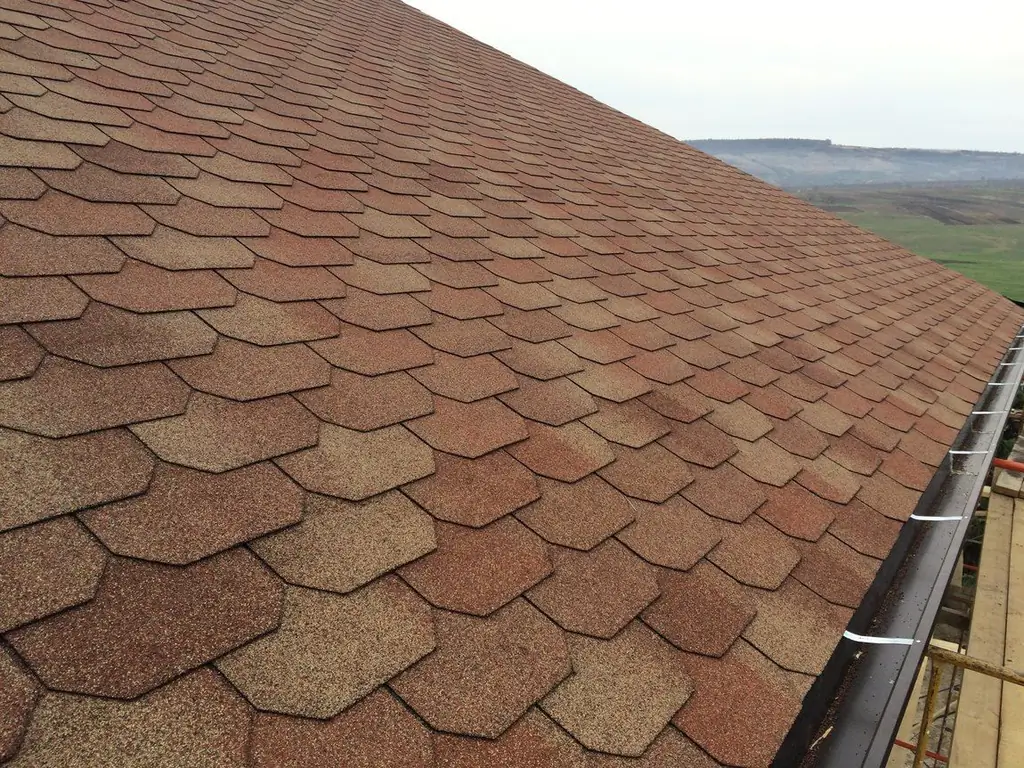
Preparatory work before installing a soft roof. Layout and methods of laying. Features of the assembly of additional elements on the roof. Required tools
